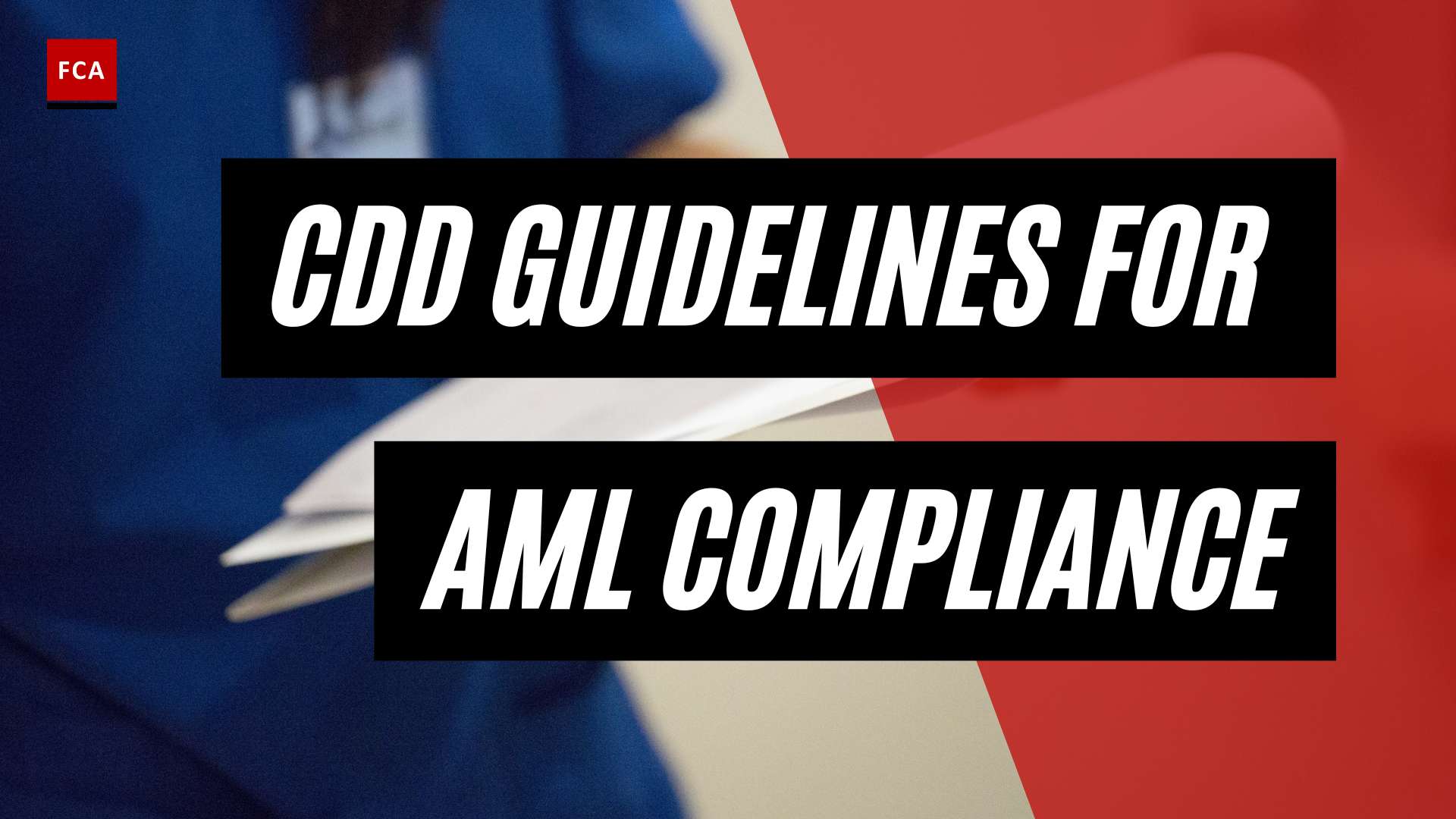Understanding AML Compliance
To combat financial crimes and maintain compliance with regulatory bodies, financial institutions globally need to develop and implement Anti-Money Laundering (AML) compliance programs. These programs are essential for detecting and reporting suspicious money-laundering activities, tax evasion, fraud, and terrorist financing to the appropriate authorities. By having strong internal detection systems and controls, financial institutions can contribute to the overall integrity of the global financial system.
Importance of AML Compliance Programs
AML compliance programs play a crucial role in safeguarding financial institutions and the wider economy. They help institutions fulfill their legal obligations, mitigate risks, and protect themselves from potential fines and reputational damage. Recent events have highlighted the severe consequences faced by financial institutions that violate AML laws and regulations, emphasizing the need for effective AML programs that go beyond mere compliance (Flagright).
Key Components of an AML Compliance Program
An effective AML compliance program consists of several key components that work together to establish a strong foundation for compliance. These components include:
- Compliance Officer: Designating a compliance officer responsible for overseeing the implementation and maintenance of the AML program.
- Internal Controls and Procedures: Developing and implementing internal controls and procedures to identify and mitigate money laundering risks.
- Compliance Policies: Establishing written compliance policies that outline the institution’s approach to AML compliance and provide guidelines for risk and compliance teams.
- AML Training Program: Implementing a comprehensive training program to educate employees on AML regulations, their responsibilities, and the detection of suspicious activities.
- Independent Audits and Reviews: Conducting regular independent audits and reviews to assess the effectiveness of the AML program and identify areas for improvement.
- Customer Due Diligence (CDD): Performing customer risk assessments during onboarding and ongoing monitoring to gather essential data and assess risks based on individual credentials.
- Tools and Technology: Utilizing effective tools and technology to enhance the institution’s ability to detect and prevent money laundering activities.
- Compliance Framework: Establishing a robust compliance framework within the organization, ensuring ongoing compliance with AML regulations and the ability to adapt to changing requirements (Unit21).
Role of Know Your Customer (KYC) Programs
A crucial component of AML compliance programs is the implementation of Know Your Customer (KYC) programs. KYC involves conducting customer risk assessments during the onboarding process and performing ongoing monitoring to gather essential data and assess risks based on individual credentials. KYC programs help financial institutions establish the identity of their customers, understand the nature of their business relationships, and identify any potential money laundering risks. By adhering to KYC principles, institutions can enhance their ability to detect and prevent illicit activities and ensure compliance with AML regulations.
By integrating these key components into their AML compliance programs and staying up to date with the latest AML compliance regulations and AML compliance guidelines, financial institutions can build a strong foundation for combating money laundering and protecting the integrity of the financial system.
Legal Challenges and Case Law in AML Compliance
As the importance of anti-money laundering (AML) compliance continues to grow, so does the need for organizations to stay informed about the legal challenges and case law surrounding AML compliance. Understanding recent legal challenges, the impact of violating AML laws and regulations, and the potential penalties for non-compliance is essential for building a robust AML compliance program.
Recent AML Legal Challenges
Recent events have demonstrated that financial institutions that violate AML laws and regulations risk severe fines and reputational damage. It is no longer sufficient for organizations to simply have an AML compliance program in place; they must ensure that it is effective and comprehensive. Staying up to date with recent AML legal challenges helps organizations understand the evolving regulatory landscape and make necessary adjustments to their compliance practices.
Impact of Violating AML Laws and Regulations
Failure to meet AML compliance requirements can have significant consequences for organizations. Violations can result in severe fines, loss of reputation, legal action, and even imprisonment for individuals involved. For instance, Capital One was fined $390 million for willful and neglectful violations of the Bank Secrecy Act (BSA), as they failed to report $16 billion worth of transactions despite repeated warnings from regulators. The impact of violating AML laws and regulations can be detrimental to both the financial stability and reputation of an organization.
AML Compliance and Penalties
The penalties for non-compliance with AML regulations can be severe. Organizations may face substantial fines, legal actions, reputational damage, and business disruption. It is crucial for organizations to prioritize AML compliance efforts to mitigate these risks and ensure adherence to regulatory requirements.
To illustrate the consequences of non-compliance, let’s consider an example. In 2019, a US-based insurance company was fined $1.25 million by the Financial Industry Regulatory Authority (FINRA) for failing to provide adequate AML training to its employees. This case highlights the strict consequences that companies may face for insufficient AML compliance training (Financial Crime Academy).
By staying informed about recent legal challenges, understanding the impact of violating AML laws and regulations, and recognizing the potential penalties for non-compliance, organizations can take proactive steps to strengthen their AML compliance programs. This includes implementing effective AML training programs, establishing robust internal controls, and regularly reviewing and updating compliance procedures to align with the evolving regulatory environment.
AML Compliance Training
In the world of financial institutions, AML compliance training plays a pivotal role in ensuring adherence to regulatory requirements such as Anti-Money Laundering (AML) legislation, Counter-Terrorist Financing (CTF) laws, and regulations set by the Financial Action Task Force (FATF). The significance of AML compliance training cannot be overstated, particularly when it comes to combating financial crimes and protecting organizations from the severe consequences of non-compliance.
The Significance of AML Compliance Training
AML compliance training is critical for employees in financial institutions to recognize and understand the risks associated with money laundering and terrorist financing activities. It equips them with the knowledge and skills to identify suspicious activities, report them to the relevant authorities, and safeguard the organization from being exploited as a vehicle for illicit financial activities.
By providing employees with comprehensive AML training, organizations foster a culture of compliance and ensure that each individual understands their obligations. Regular training sessions help reinforce the importance of AML compliance, keeping employees up to date with the latest regulations and enhancing their ability to prevent financial crimes effectively. This, in turn, safeguards the institution’s reputation and reduces the risk of penalties associated with non-compliance.
AML Training Requirements and Regulations
AML compliance training is not only a best practice but is often required by regulatory authorities for employees who handle financial transactions. Failure to provide proper training can lead to hefty fines and significant reputational damage, as demonstrated by the substantial penalties imposed on financial institutions for AML violations in recent years.
Regulatory bodies expect organizations to implement comprehensive training programs that cover essential topics such as customer due diligence, transaction monitoring, and reporting requirements. These programs ensure that employees are equipped with the necessary knowledge and skills to identify red flags and effectively combat money laundering and terrorist financing activities.
Effective AML Training Programs
To maximize the effectiveness of AML compliance training, organizations should develop tailored programs that align with their specific needs and those of their employees. Training should be customized to individual roles and responsibilities within the organization, enabling employees to understand the unique risks associated with their functions.
Effective AML training programs often include a variety of teaching methods such as seminars, workshops, e-learning modules, and case studies. These programs aim to engage employees, promote active learning, and enhance their ability to apply AML principles in real-world scenarios.
By investing in comprehensive AML compliance training for employees, organizations demonstrate their commitment to regulatory compliance, protect against money laundering risks, and uphold the integrity of the financial system. A well-trained workforce is a valuable asset in the fight against financial crimes, helping to mitigate risks and safeguard the reputation of the institution.
In the next sections, we will explore how organizations can tailor AML training programs to specific roles and responsibilities, determine the frequency and content of training sessions, and identify trigger points that necessitate additional AML training.
Tailoring AML Training Programs
To ensure the effectiveness of AML compliance training, it is essential to tailor the training programs to meet the specific roles and responsibilities of individuals within the organization. This customization helps employees understand the risks associated with money laundering and terrorist financing activities and equips them with the necessary knowledge and skills to fulfill their obligations.
Tailoring Training to Specific Roles and Responsibilities
AML compliance training should be designed to address the unique needs of different individuals in the organization. This includes reception staff, solicitors, managers, compliance officers, and other relevant personnel, as each of them plays a crucial role in anti-money laundering processes (Jonathon Bray). By tailoring the training to their specific roles and responsibilities, employees gain a deeper understanding of the potential risks they may encounter and the appropriate measures to mitigate them.
For example, training for frontline employees, such as customer service representatives, should focus on recognizing red flags and suspicious activities during customer interactions. On the other hand, compliance officers may require more in-depth training on regulatory requirements, risk assessment, and reporting obligations.
Frequency and Content of AML Training
The frequency and content of AML training should be guided by the risk exposure of the organization. Higher-risk firms, particularly those in conveyancing and complex corporate sectors, should have tighter AML controls and conduct auditable training annually, with reminders and briefings in between. Lower-risk firms may require less frequent formal AML training, traditionally recommended every two years, depending on their specific risk profile (Jonathon Bray).
The content of the training should cover a range of topics, including:
- Overview of money laundering and terrorist financing activities
- Regulatory requirements and obligations
- Recognizing and reporting suspicious transactions
- Conducting customer due diligence and know your customer (KYC) procedures
- Internal policies and procedures related to AML compliance
- Case studies and real-life examples to illustrate key concepts
- Emerging trends and developments in AML regulations
Training programs should be designed to be engaging and interactive, incorporating practical exercises, quizzes, and scenarios that allow participants to apply their knowledge in a simulated environment.
Trigger Points for AML Training
In addition to regular training, there are certain trigger points that should prompt a review of training requirements. These trigger points may include:
- New staff inductions: Ensuring that new employees receive comprehensive AML training as part of their onboarding process to familiarize them with the organization’s policies and procedures.
- Material changes in the AML regime or internal policies: Revisiting training programs when there are significant updates to AML regulations or changes in the organization’s internal policies to ensure employees are up to date.
- Risk-based assessments: Conducting firm-wide risk assessments to identify areas where training should be focused. Higher-risk areas may require more frequent and targeted training.
By considering these trigger points, organizations can ensure that AML training remains relevant and effective in addressing the evolving landscape of financial crimes.
Tailoring AML training programs to specific roles and responsibilities, determining the appropriate frequency and content, and recognizing trigger points for additional training are crucial steps in building a strong foundation of AML compliance within an organization. Regular and customized AML training not only helps employees recognize suspicious activities but also fosters a culture of compliance, protecting the organization from being used as a vehicle for money laundering or terrorist financing.
Consequences of Non-Compliance
Ensuring compliance with Anti-Money Laundering (AML) regulations is of paramount importance for businesses and individuals. Failure to comply with AML requirements can result in significant risks and consequences. This section explores the potential risks and consequences of non-compliance, highlights case studies involving fines and legal actions, and emphasizes the importance of effective AML training.
Risks and Consequences of Non-Compliance
Non-compliance with AML regulations can expose organizations and individuals to various risks and consequences. Some of the key risks and consequences include:
- Financial Penalties: Regulatory authorities have the power to impose hefty fines on entities that fail to comply with AML regulations. These fines can amount to millions of dollars and have a severe impact on the financial stability of the organization. For example, in 2019, a US-based insurance company was fined $1.25 million for inadequate AML training (Financial Crime Academy).
- Legal Actions: Non-compliance with AML regulations can result in legal actions and investigations. This can lead to litigation, reputational damage, and loss of public trust. Legal actions may involve criminal charges, civil penalties, or regulatory enforcement actions.
- Imprisonment: In extreme cases of non-compliance, individuals involved in money laundering activities can face imprisonment. This serves as a strong deterrent and highlights the seriousness of AML violations.
- Reputational Damage: Non-compliance can tarnish an organization’s reputation, leading to a loss of customer trust, business opportunities, and partnerships. Rebuilding a damaged reputation can be a challenging and time-consuming process.
- Business Disruption: Non-compliance can disrupt business operations, leading to regulatory scrutiny, increased oversight, and potential suspension or revocation of licenses.
- Financial Losses: Non-compliance can result in financial losses due to fines, legal fees, remediation efforts, and the potential loss of business opportunities.
Case Studies: Fines and Legal Actions
Several real-world case studies highlight the severe consequences of non-compliance with AML regulations. For instance, a firm in the United Kingdom was fined £20,000 by the Solicitors Regulation Authority for failing to have adequate AML training and systems in place. In the United States, a company was fined $1.25 million by FINRA for inadequate AML training. These examples demonstrate the financial and reputational impact non-compliance can have on organizations.
Importance of Effective AML Training
To mitigate the risks and consequences of non-compliance, it is crucial to prioritize effective AML training programs. AML training equips employees with the knowledge and skills necessary to identify, prevent, and report suspicious activities. It helps organizations establish a culture of compliance and ensures that employees understand their responsibilities in combating money laundering.
Investing in comprehensive and tailored AML training programs can significantly reduce the likelihood of non-compliance. A study by the Association of Certified Financial Crime Specialists (ACFCS) revealed that only 26% of organizations are entirely satisfied with their AML training programs, indicating a widespread dissatisfaction with the quality of AML training across industries.
By providing regular and up-to-date AML training, organizations can enhance their internal controls, mitigate risks, and foster a stronger compliance culture. AML training should be tailored to specific roles and responsibilities, taking into account the unique AML risks faced by each department. Regular training refreshers and updates are essential to ensure ongoing compliance.
In conclusion, the risks and consequences of non-compliance with AML regulations are significant. Organizations should prioritize effective AML training programs to mitigate these risks, avoid financial penalties, legal actions, and reputational damage. By investing in comprehensive and tailored training, organizations can foster a culture of compliance and minimize the likelihood of non-compliance.








